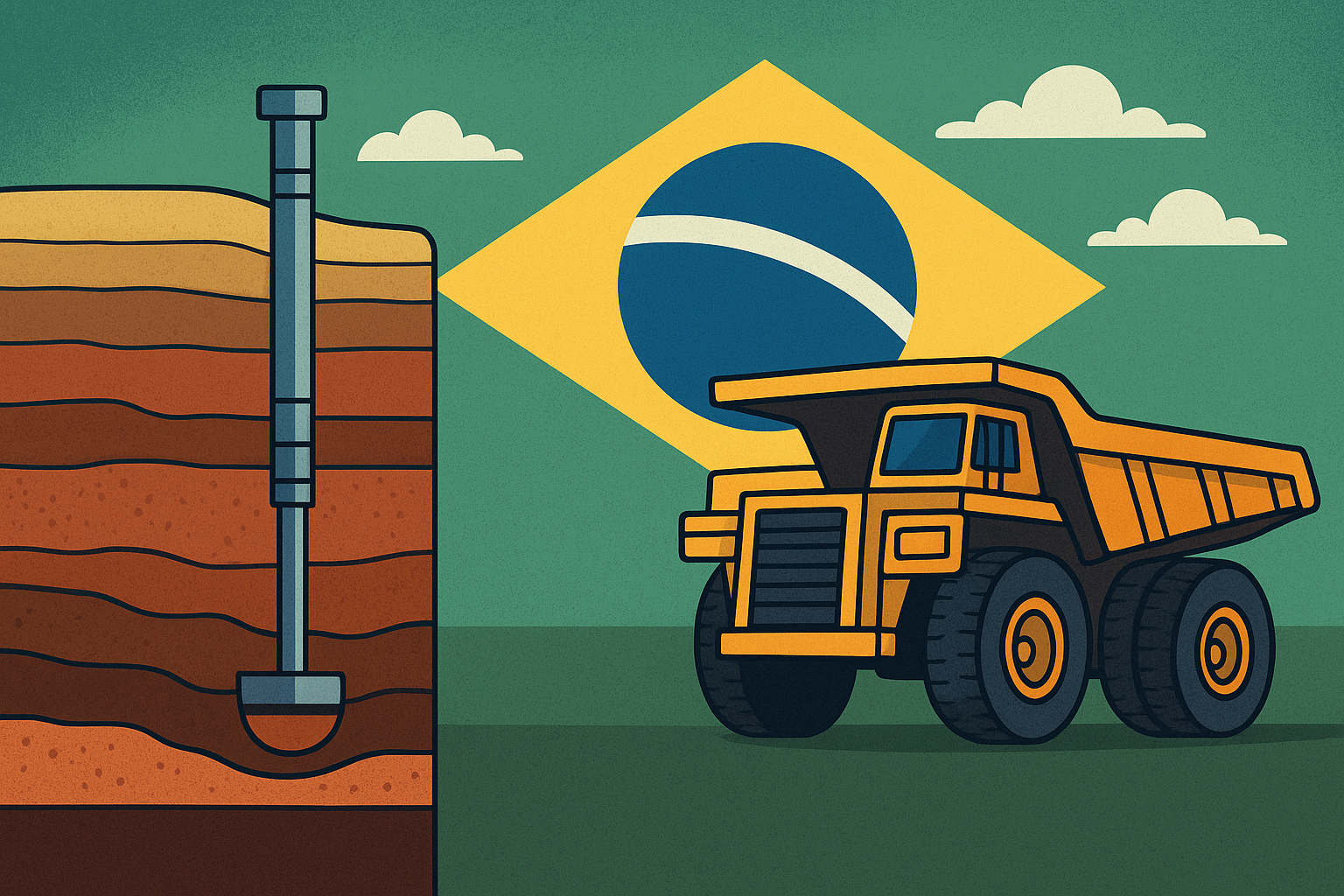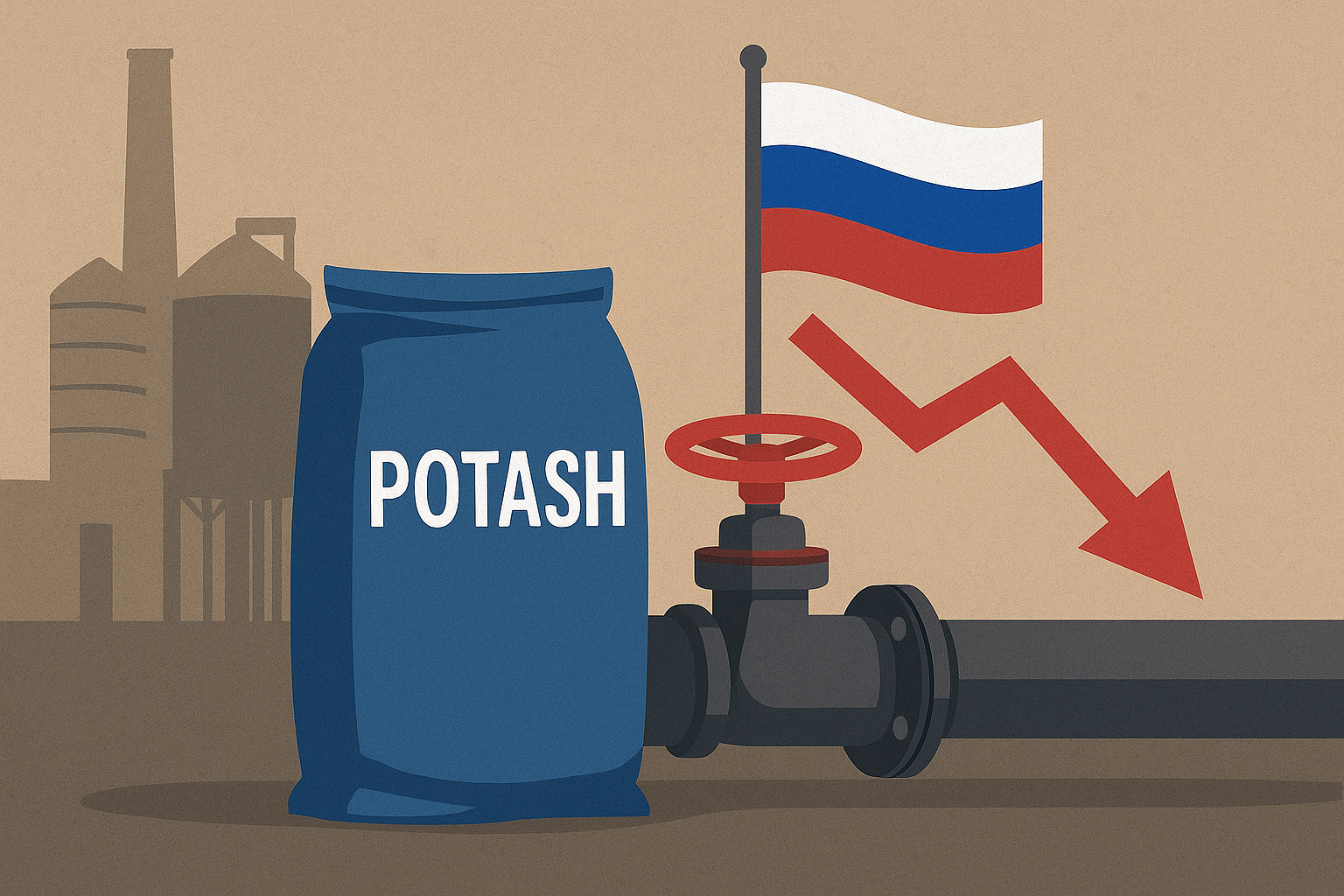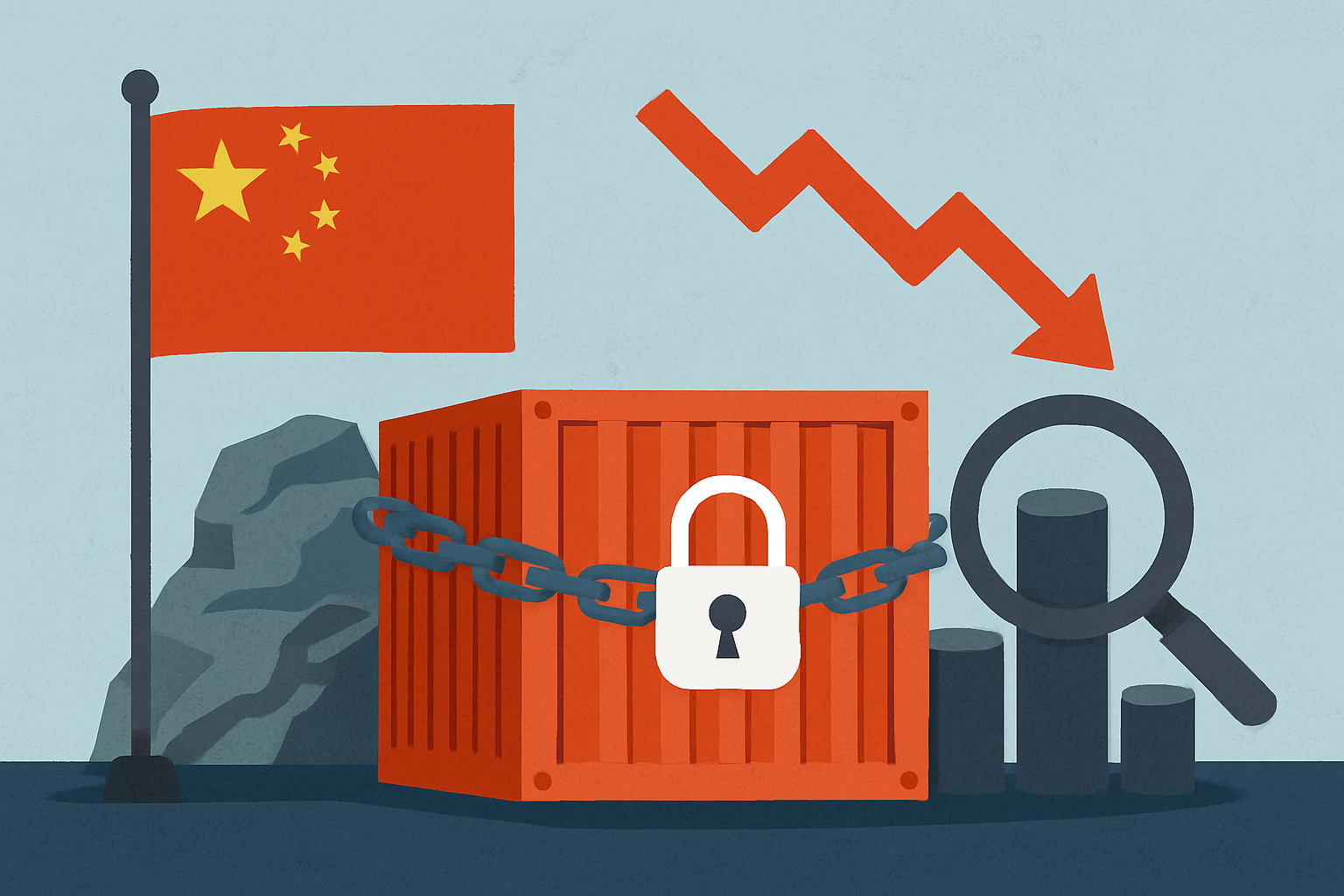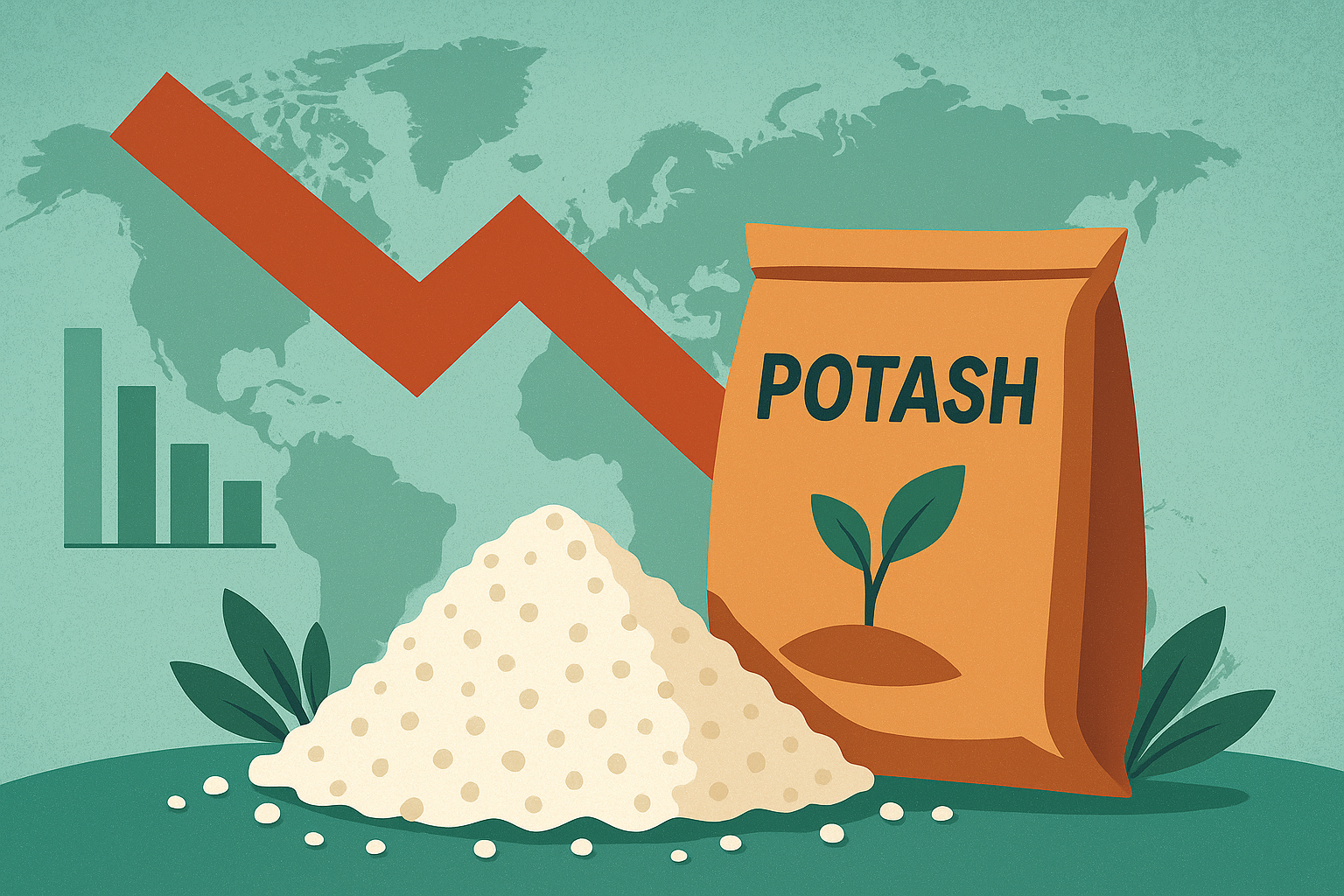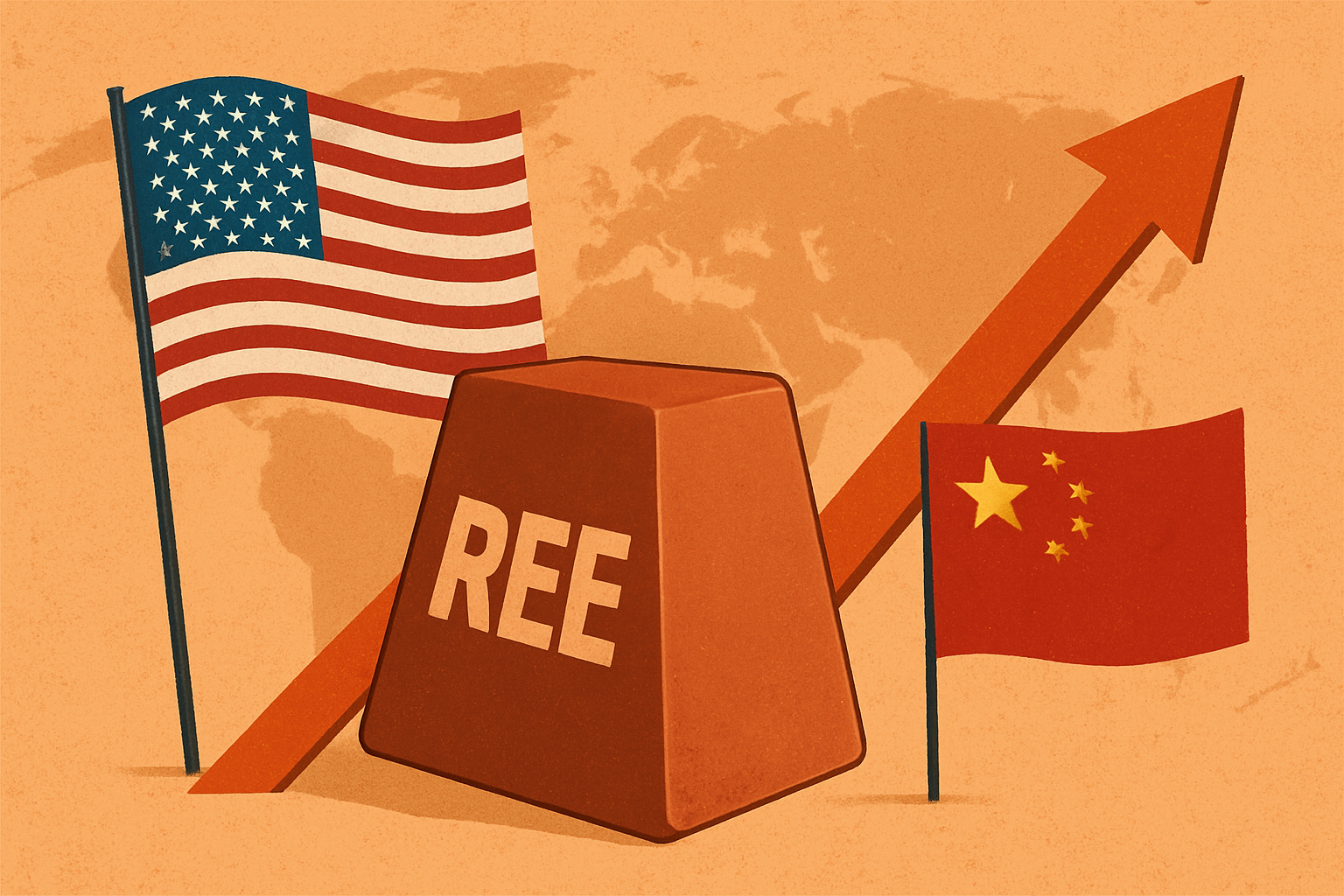Global fertilizer markets are tightening again — and two recent developments signal growing investor interest in the potash sector. Millennial Potash Corp. (TSXV: MLP) has reported a thick, high-grade potash intersection at its Banio Project in Gabon, while Brazil Potash Corp. has advanced a massive $2.5 billion domestic development in the Amazon basin. Both moves come as nations scramble to secure fertilizer supply chains amid rising food demand and ongoing geopolitical volatility.
With global potash prices stabilizing above pre-pandemic levels and supply risks lingering from Eastern Europe, these announcements mark a significant moment for investors tracking resource security and agricultural input plays.
Building Confidence at Banio: Millennial Potash’s Latest Drill Success
Millennial Potash announced that drillhole BA-004 at its Banio project intersected 101.45 metres of cumulative potash mineralization averaging 16.8 % KCl (13 % cut-off) — one of the strongest results yet from the emerging West African basin. According to the company’s latest release on Stockhouse (Oct 14, 2025), the consistency of thick, high-grade layers strengthens the case for resource continuity and hints at an upcoming resource update.
The Banio project lies along the same evaporite trend as the historic Congo Basin, where multi-layered potash horizons have previously demonstrated world-class tonnage potential. If ongoing drilling confirms lateral extensions, analysts believe Banio could evolve into one of Africa’s most attractive undeveloped potash deposits.
This comes amid rising institutional interest in critical agricultural inputs and fertilizer diversification, as Western buyers seek non-Russian and non-Belarusian supply chains. “High-grade intercepts like these provide early technical validation that will be critical for securing strategic investors,” one industry analyst told Exploration Stocks, noting that offtake discussions are likely to accelerate if continuity holds through upcoming step-out drilling.
Brazil Potash: A Domestic Giant in the Making
Meanwhile, in South America, Brazil Potash Corp. has reaffirmed its ambition to make Brazil self-sufficient in potash by 2030. As reported by Farm Progress and Equity.Guru, the company unveiled plans for its $2.5 billion Autazes Project — a major undertaking that includes twin production shafts, a processing plant, and a river port designed to integrate into Brazil’s vast agricultural heartland.
Crucially, the company has secured a 60 % offtake commitment, providing early commercial validation and helping to de-risk project financing. Once operational, Autazes could supply more than 2 million tonnes of potash annually, covering roughly one-third of Brazil’s fertilizer imports.
Brazil currently depends on imports for about 85 % of its potash, much of which comes from geopolitical flashpoints like Russia and Belarus. In the wake of supply shocks since 2022, the government has prioritized domestic fertilizer production under its “Potássio do Brasil” initiative, offering potential tax incentives and infrastructure support for strategic projects.
Why This Matters for Investors
Potash — a key component of fertilizer used to enhance crop yields — sits at the intersection of agriculture, resource security, and energy transition policy. Global consumption continues to rise steadily, particularly in Asia and South America, even as supply concentration remains high. According to Bloomberg Intelligence, over 70 % of the world’s potash supply is still controlled by just three regions: Canada, Russia, and Belarus.
That concentration creates structural vulnerability — a dynamic that has pushed investors to look toward emerging producers such as Gabon, Brazil, and Ethiopia. Projects with credible geology, stable jurisdictions, and advancing feasibility studies could offer outsized leverage if global trade disruptions re-emerge or agricultural demand spikes.
Millennial Potash’s ongoing exploration success positions it among a small cohort of junior developers targeting new basin-scale potential outside traditional producing regions. Meanwhile, Brazil’s infrastructure-heavy Autazes development shows how resource nationalism and food security policies are reshaping the global supply map.
Future Trends to Watch
- Fertilizer Security as Policy Priority: Governments are increasingly classifying potash as a strategic mineral, unlocking funding and permitting advantages for domestic projects.
- Sustainability and ESG Pressures: Projects like Banio and Autazes will be scrutinized for environmental and community impacts — a key factor for institutional capital.
- M&A Potential: Larger producers such as Nutrien ($NTR), Mosaic ($MOS), and BHP ($BHP) may seek acquisitions to diversify geographic exposure.
- Pricing Stability: Analysts at Reuters expect potash prices to remain firm through 2026 as new supply additions lag behind rising demand.
Key Investment Insight
For investors, the story is clear: the potash sector is entering a new phase of strategic competition and regional diversification. Juniors delivering verifiable high-grade discoveries (like Millennial Potash) could attract early-stage capital or partnerships, while large-scale infrastructure plays (like Brazil Potash) could redefine supply routes and pricing power over the next decade.
Exposure to diversified fertilizer producers, potash-focused ETFs, or well-capitalized developers may provide meaningful upside as agricultural demand and geopolitical risk converge.
Stay ahead of these developments and more by following ExplorationStocks.com — your trusted source for actionable investor news and daily market intelligence across global mining and commodities.

